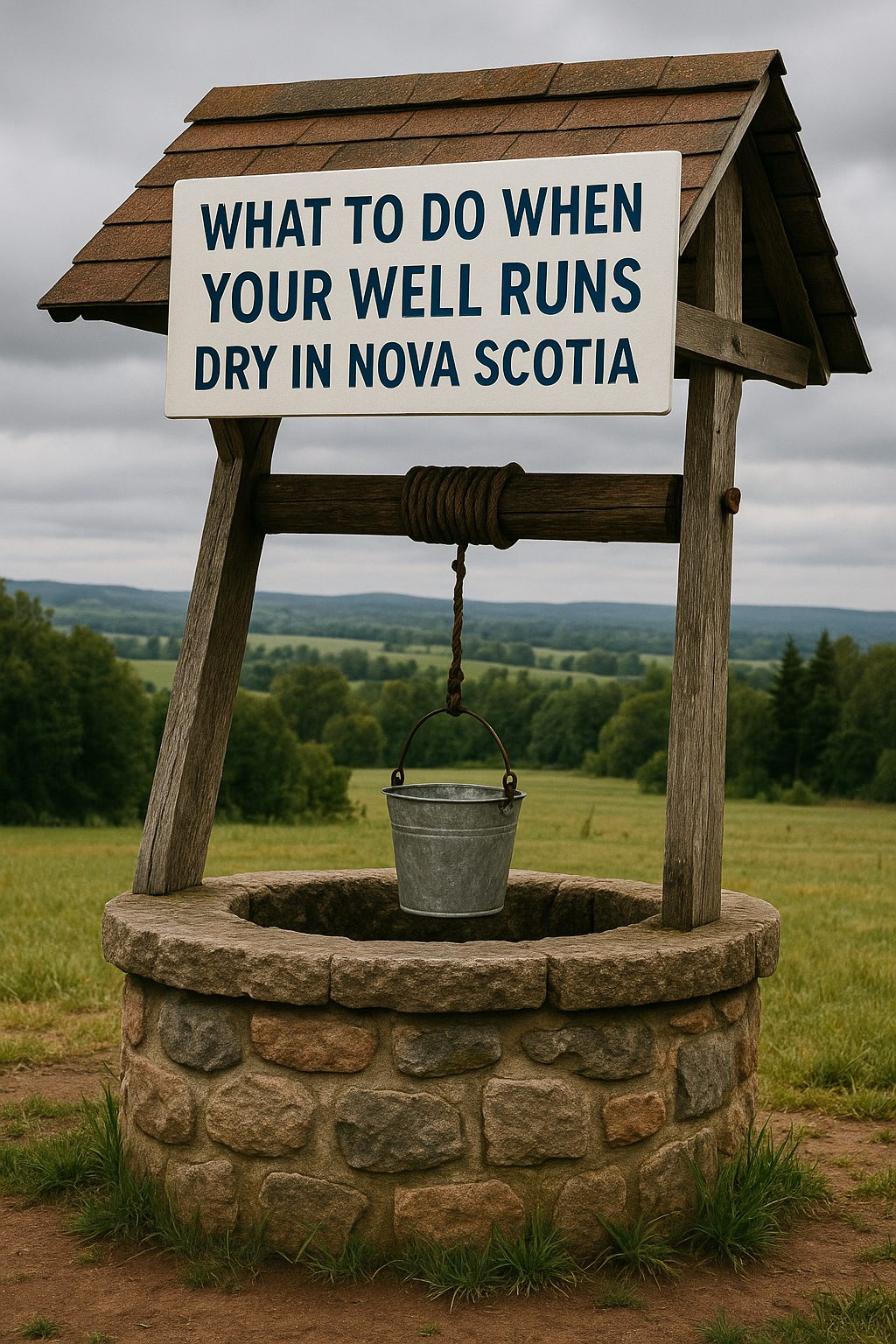What to Do When Your Well Runs Dry in Nova Scotia: A Step-by-Step Guide
If your well has suddenly stopped producing water, it can be stressful, but you’re not alone. In Nova Scotia, roughly 40% to 46% of households rely on private wells for their drinking water. When one runs dry, fast action and informed decisions are key. This guide walks you through what to do immediately, what professional options are available, and how to prepare for the future.
🚩 Early Warning Signs of a Dry Well
Watch for these common indicators that your well may be running dry:
-
Faucets sputtering or releasing air
-
Sudden drop in household water pressure
-
Cloudy, muddy, or strange-tasting water
-
Visible sediment in the water
Recognizing these signs early can help you prevent damage to your system and secure a backup water source quickly.
🚨 What to Do Immediately
1. Turn Off the Pump
If your well isn’t producing water, turn off the pump right away. Running it dry can lead to expensive damage.
2. Conserve What’s Left
If any water remains in your system, use it only for essentials like drinking, cooking, and basic hygiene.
3. Secure a Safe Water Supply
Arrange for temporary drinking water through:
-
Bottled water from retailers
-
Bulk delivery from certified water haulers
-
Neighbours with municipal supply (with sanitized containers)
-
Municipal water stations (if accessible)
4. Check for Other Issues
Sometimes what seems like a dry well is actually:
-
A pump malfunction
-
Electrical issues
-
Plumbing leaks
Have a licensed professional confirm the cause before proceeding.
❌ What Not to Do
-
Don’t pour water into your well from external sources. This can contaminate your aquifer and damage your well permanently.
🔧 Professional Fixes: Your Options
If your well is confirmed dry, here are several solutions to consider:
✔️ Lower the Pump
If the water table has dropped but not disappeared, lowering your pump might restore access to water.
✔️ Deepen the Well
Increasing the depth of the well can improve yield—but may cost as much as drilling a new one.
✔️ Hydrofracturing (Hydrofracking)
This method uses pressurized water to open new cracks in bedrock, potentially increasing water flow. It has proven effective in many parts of Nova Scotia.
✔️ Well Rehabilitation
For wells older than 20–30 years, mineral buildup and sediment may be reducing output. Professional cleaning could bring it back to life.
🌧️ Let Nature Refill: A Waiting Strategy
If your well has run dry due to a temporary drought or overuse:
-
Stop using the well for a few days to allow natural recharge
-
Check again after rainfall to see if water returns
Seasonal shifts in Nova Scotia can sometimes resolve low-yield wells without major intervention.
🔁 Planning for Long-Term Water Security
🔧 System Improvements
If your area regularly experiences water shortages, consider:
-
Installing a deeper or second well
-
Adding a cistern for water storage
-
Upgrading your pressure tank or filtration system
💧 Smart Water Use
Practice conservation, especially during dry spells:
-
Install low-flow taps and showerheads
-
Minimize lawn watering and car washing
-
Fix leaks immediately
📅 Schedule Regular Maintenance
Test your water quality at least twice a year, especially after a dry spell or major repair. Follow Nova Scotia’s public health recommendations for private wells.
🧪 Once Water Returns: Disinfect and Test
When your well is working again:
-
Disinfect the system using provincial chlorination guidelines.
-
Wait a few days before collecting samples.
-
Test the water at a certified lab to confirm it’s safe to drink.
Continue using alternative water sources until your water is officially cleared for use. https://www.novascotia.ca/nse/water/docs/disinfectwaterwell.pdf
👷 When to Call a Professional
Reach out to a certified well contractor or the Nova Scotia Department of Environment and Climate Change if:
-
Your well stays dry despite rainfall
-
The well is older and underperforming
-
You suspect contamination
-
You’re unsure of the cause or next steps
✅ Key Takeaways for Nova Scotia Well Owners
-
Act fast and protect your equipment by shutting off your pump early
-
Never introduce outside water to your well—this risks contamination
-
Consider short-term and long-term solutions like pump lowering or hydrofracking
-
Disinfect and test water before returning to normal use
-
Follow provincial guidelines to keep your well water safe year-round
A dry well can be a major inconvenience—but it’s manageable with a smart, calm response. Take the right steps early and connect with professionals to restore your supply and protect your home’s water security into the future.
For more support, contact your local Department of Environment and Climate Change office or a certified water professional in your area.

 Facebook
Facebook
 X
X
 Pinterest
Pinterest
 Copy Link
Copy Link

